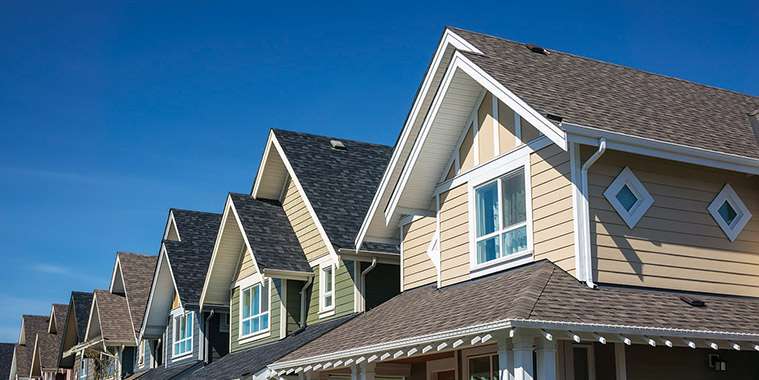By Peter Squire
In tandem with the overland flooding we’ve been experiencing due to all the rain this month, we’re also seeing a flood of new listings in our local market.
Macro factors such as Bank of Canada interest rate increases, inflation, global uncertainly with the Russian invasion of Ukraine, and lingering vestiges of the pandemic have all impacted real estate sales activity across the country this year. Weather is more localized, and Manitoba has had its share of challenges in this regard with consecutive Colorado lows bringing significant precipitation to our already saturated land mass and causing flooding in many municipalities.
When asked recently by the media about the status of our local market — when national headlines are speaking of cooling activity with prices falling off as well — the short answer is just allow Manitoba to have a chance to get its delayed spring market started, as it appears to finally be taking off as of the May long weekend after a long-protracted winter.
This is in fact the case, with listings coming on strong in May after the supply-starved market we experienced in the first four months of this year. At the end of April, listings entered on MLS® were down 23% from last year. While changing circumstances are upon us this year with all that has happened nationally and globally, the local economy is chugging along quite well with low unemployment numbers, so certainly there was not been the expectation that listings would fall off to this extent.
Another indicator of lower than normal listings is how much inventory is left at the end of each month — or listings still available for sale. Even with sales not being as brisk in 2022 compared to the record-shattering 2021 — where it was exceptionally strong in the first seven months with consecutive all-time best monthly sales — month end listings have been well below previous years. The first three months of this year have been consistently under 1,900 listings, when 2021 averaged 2,500 and previous years were closer to the 4,000 level. April showed a little progression, with active listings reaching over 2,000 at month end.
With this trend in mind, now you can understand why you’ve been hearing that if there were no more new listings to come onto the market, the existing inventory would be sold out in a little more than one month. We know that is the overall regional market situation, but in some highly sought after neighbourhoods in Winnipeg, there are almost no listings available by the end of each month. The cupboards are literally bare and they need to be restocked.
The message of lack of listings — and the opportunity to capitalize on what remains a seller’s market in the Winnipeg Regional Real Estate Board (WRREB) market — is finally resonating with property owners. Checking current inventory as of May 24, there are now over 2,600 listings available for sale which is just 6% off the number at the end of May 2021. This is very different from the lower levels cited earlier in the year. There is still one week to go this month, so it is distinctly possible the warmer weather everyone has come to expect by this time of year is going to bring the active listings total closer to last year’s average.
Helping make this active listing total higher has been the healthy intake of new listings this month. Over 2,000 were entered as of May 24, so there might be as many listings entered this month as there were in May 2021 when there were over 2,500 listings. This listing momentum may well carry into June given the delayed spring market due to all the overland flooding in our regional market.
While more listings are helpful, we are still nowhere near a balanced market, where you want to have at least 4 months of supply available. In a balanced market, buyers have more selection and time to make a move on a property they may wish to put an offer on. Our listing environment at least looks to be moving towards the nationally reported April month end of 2.2 months of inventory, which is historically very low. The Canadian Real Estate Association (CREA) reports that their long-term average for this measure is over 5 months.
As for sales, our local market is being impacted like other major markets by a shortage of listings, higher interest rates, and cost of living increases. Let’s not forget that the kind of frenetic market sales activity we experienced starting mid-year 2020 through to most of 2021 was not sustainable. The pandemic clearly induced unprecedented buyer demand that would have been more gradual and spread out if it had not occurred.
Having said that, sales this year are performing well relative to previous years, with the exception of 2021. While MLS® sales are down 27% for the first four months of this year compared to 2021, they are up in the high 20 percentage range for the three years prior to 2021. This challenge for 2022 will continue when comparing it to last year as May 2021 will not be threatened either as it is the second busiest month ever at over 2,000 sales.
Without being too presumptuous about housing prices, as we still have to wait and see how they are faring at the end of May, CREA’s Home Price Index (HPI) shows that in April, our regional market increased over March — albeit by a modest 0.4%. The overall aggregate composite benchmark price rose from $348,900 in March to $351,100 in April. Some markets, like Greater Toronto, saw a decrease in their index price, but the average price in that market is still over $1.3 million. Interestingly enough, the highest index price in the country is Oakville-Milton at $1,583,000. This was another market that in April experienced a decrease, as the index price was $1,676,900 in March. The high-priced housing markets in British Columbia, such as Vancouver, the lower mainland, and Fraser Valley, were all over $1.3 million.
So comparatively speaking, Winnipeg remains a very affordable housing market, although prices are still rising given the imbalance between supply and demand. More listings are still needed to balance our market, so that’s something to watch for as we move into the summer months.
Peter Squire is the Winnipeg Regional Real Estate Board’s Vice-President, External Relations & Market Intelligence.



